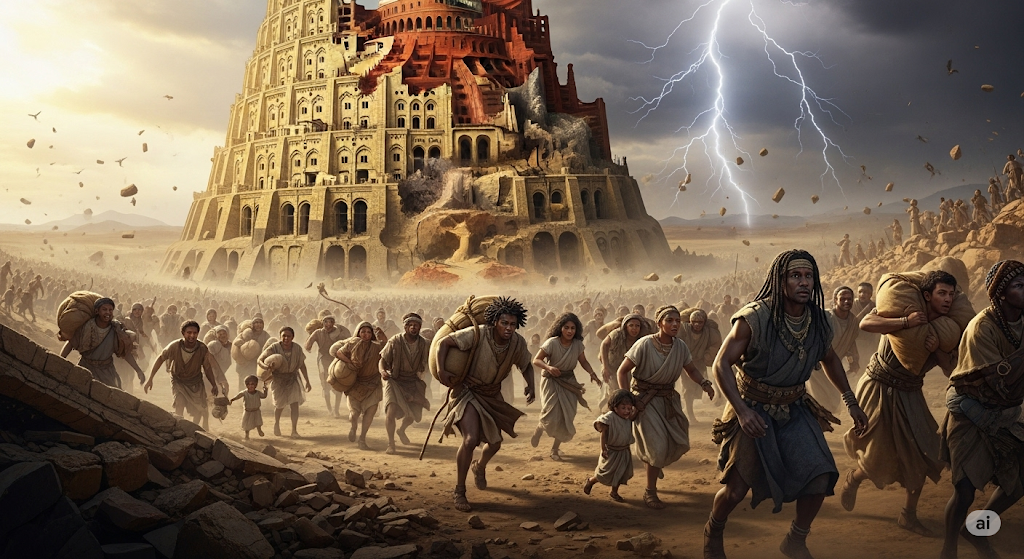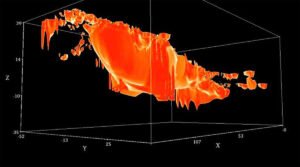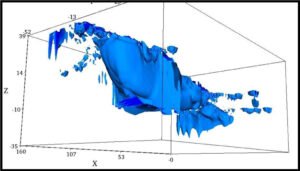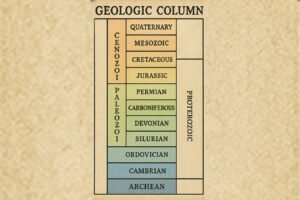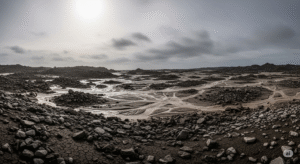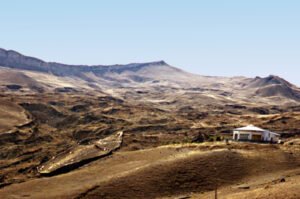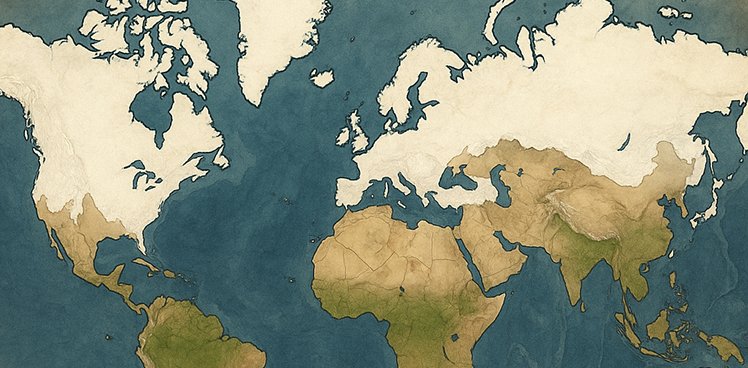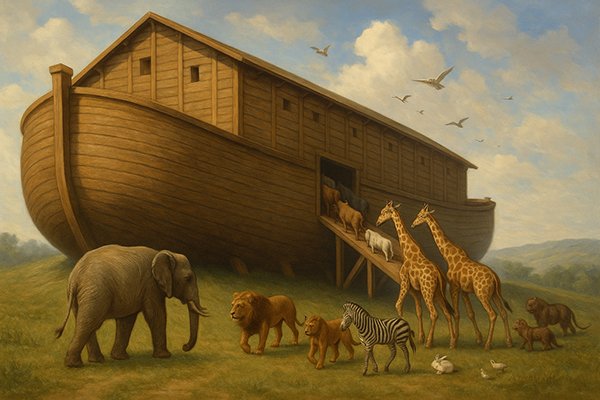The Dispersion of People Throughout the World
Where Did the People Disperse To?
Genesis chapter 10 tells us in general where the various groups of people dispersed to. In verse 10 it includes some more information about Nimrod and his kingdom:
GEN 10:10 And the beginning of his kingdom was Babel, and Erech, and Accad, and Calneh, in the land of Shinar.
The fact that he is stated as having “a kingdom” tells us that he had a following- in fact, a following large enough to found at least 4 cities. Where were these cities? Nimrod was the son of Cush who was the son of Ham. The Cushites were those who settled in Egypt, Arabia, and Ethiopia.
But Nimrod’s cities that were “the beginning of his kingdom” were in “the land of Shinar”, which we discussed earlier. In the next Scripture, we learn that it was from this area which contained Nimrod’s cities which Asshur, a son of Shem LEFT to found HIS cities:
Gen 10:11 Out of that land went forth Asshur, and builded Nineveh, and the city Rehoboth, and Calah, 12 And Resen between Nineveh and Calah: the same is a great city.
The chronology of the Bible indicates the direction of travel FIRST from the original home near the ark to the plain in Shinar; THEN, from this area (which was where Nimrod’s kingdom had its “beginning”), Asshur went OUT to found his cities. This indicates that Nimrod’s first cities were between Babel (or in the vicinity) and wherever Asshur’s cities were located.
On the map, you can see that Ron’s location of Babel is in the plain on the banks of the Euphrates, within miles of the beginning of the Tigris. Asshur, it appears, simply began to follow the Tigris, leaving the immediate area of Babel in south central Turkey, and founded his cities to the east.
Belief the Nimrod's Cities Not Accurately Identified
Our conclusion is that none of Nimrod’s cities have been accurately identified. The peoples who settled the later (well over 1,000 years) city of Babylon and the region further south were NOT Cushite, as Nimrod was. And since the Cushites settled in Egypt, Arabia and Ethiopia it seems most likely that they traveled NOT down along the Euphrates but instead along the Mediterranean coast through Canaan which is the most direct route to these places.
Also, Canaan was inhabited by the Canaanites, also descendants of Ham so it makes more sense that those of the same family would tend to migrate together even if they didn’t speak the same language. And since Nimrod was a “leader”, it makes sense that the Cushites would have tended to follow him at least for a while, then, along the way, finding land they liked in Canaan, they settled while the others kept traveling south.
Since the Cushites ended up in Egypt, Arabia and Ethiopia, it seems likely that he ended up in that region as well. After all, the cities listed as being his are said to be “the BEGINNING of his kingdom- so where is the rest? The ancient civilization that exhibited the strongest evidences of Nimrod, his wife, and his son, Tammuz, is Egypt where he was worshiped as Osiris (the martyred god) and Horus (the reincarnation of Osiris).
But the bottom line is that we have no positive evidence as to the location of his cities simply because it seems likely that there was no writing system at that time to record the facts.
Asshur Left Nimrod’s First Kingdom to Found His Kingdom
Asshur is stated to have founded Nineveh, Rehoboth, Calah and Resen. On the Tigris River, southeast of where we believe Babel was are the remains of an extremely large ancient city identified as Nineveh. The written evidences show this to have been the name and it seems likely that this is correct.
People Tend to Name New Locations as Names of Locations They Came From
Whether the city identified as Calah is correct cannot be proven. There is something that we must take into consideration which we have discussed before. We know when the colonists first arrived in what became the United States, they named their new cities and rivers after those they knew in England. We know that Noah and his family named 2 of the rivers near them after 2 of those they knew from the pre-flood world, the Tigris and the Euphrates.
Ancient cities were many times named after the person, or head of the family who first settled there. Later, sometimes they were named after the gods of the city who were “deified” ancestors. Therefore, if someone founded a city and then left it to go somewhere else, it is possible that whoever moved into that city gave it a new name.
These are all possibilities which must be taken into account. And therefore, we remain unsure about Asshur’s cities, with the exception of Nineveh. However, there is evidence, which we will next discuss, which indicates that the cities in the region later called “Babylonia” were founded by Asshur (“Assyria”) or at the least his descendants.
Babylon was NOT Nimrod’s City
Next, we must note that the city of “Babylon” (of over 1,000 years after the dispersion at Babel) and it’s region in “the land of the Chaldeans” mentioned in the Old Testament (beginning with II Kings 17:24 through the end of the Old Testament) is NOT the same city or kingdom Nimrod founded. This city and the region later called Babylonia was actually founded by the Assyrians:
ISA 23:13 Behold the land of the Chaldeans; this people was not, till the Assyrian founded it for them that dwell in the wilderness: they set up the towers thereof, they raised up the palaces thereof; and he brought it to ruin.
The earliest inscription referring to Babylon appears on the Sargonic text of Sar-kalī-Sarri and reveals that the Hebrew word is a Semitic pronunciation of the Hurrian word, Papil/Papal. In the Sumerian records, its oldest name was Ka-dingir, which meant “gate of god” in Sumerian.
We then learn from the ancient inscriptions that Babylon was, at its beginning, NOT the capital of a powerful nation but a provincial center under the so-called 3rd Dynasty of Ur (located far to the south near the Persian Gulf.) It next became the nucleus of a small Amorite kingdom called “the Dynasty of the Martu”- the famous Hammurabi was the 6th king of this dynasty. And from there, Babylon was conquered again and again by different people. A common practice of later conquerors was to destroy all references to previous “gods” and kings, etc., and rewrite history to honor themselves and their gods.
The above Scripture Isaiah 23:13 states of “the land of the Chaldeans” that the “Assyrian founded it for them that dwell in the wilderness”.
Although the Amorites’ early settlements maintained political and diplomatic contacts with other cities, their way of life was specifically nomadic. The myth of their god, Martu, and his marriage reflects the nomadic pattern of living, typifying the Amorite mountaineer as one unfamiliar with either agriculture or urban life. This description fits the above Scripture reference to the founding of “the land of the Chaldeans” by the Assyrians for “them that dwell in the wilderness”, or the Amorites.
Babylonia was Founded by the Assyrians, then Conquered Again and Again by Others
To state it plainly, the land later called Babylonia was founded by the descendants of Asshur (“the Assyrian”), who left the area of Babel traveling southeast along the Tigris, building Nineveh and the other cities mentioned in Genesis 10:10.
“Babylonia” was called “the land of the Chaldeans” when Nebuchadnezzar’s father, Nabopolassar (a Chaldean) defeated the Assyrians in the battle for Babylon and took the throne there in about 626 BC. Specific information as to exactly “who” this Nabopolassar was is not certain, and in his own chronicles, he calls himself “the son of a nobody” whom Marduk chose because of his piety. This possibly indicates that he came from a people who either weren’t unified by a ruler prior to him, or that he took over rulership. Whatever the case, with him began the supremacy of the “Chaldean” empire which took over Babylon.
Where Was Chaldea?
Where were these Chaldeans from? The evidence shows that their homeland included the area of south central Turkey because inscriptions have been found which tell that both Nebuchadnezzar (2nd king of the Chaldean empire) and Nabonidus (last king of the empire whose son, Belshazzar, was coregent in Babylon) built temples to “Sin”, the moon-god in HARRAN, about 80 to 100 miles south of Ron’s site for Babel.
Inscriptions also show that Nabonidus and his mother were both FROM Harran. The reason that it has been assumed that Nebuchadnezzar’s Babylon was the original Babel is because “when the Jews were carried captive into Babylonia, they were struck with the vast magnitude and peculiar character of certain of the Babylonian temples, in one or other of which they thought to recognize as the very tower [of Babel] itself.
Evidence of the Dividing of the Earth in the Days of Peleg
In Çatal Hüyük, the site of a very early settlement of people in west central Turkey, probably after Babel but still very early, excavators found “a wall painting in which either the units making up the town or the individual buildings forming one unit are shown against a background of a volcano in eruption.” (People of the Hills, p. 19). Where was this volcano being depicted?
There is an extinct volcano near Lake Van, called Nemrut Dağ (not the same as the one Ron visited in 1990 which is to the west along the Euphrates) which was a major source of obsidian in the area.
Because the obsidian from Nemrut Dağ contains unique trace elements, it was possible to identify that found in many of the earliest settlements as coming from this site which confirms that this extinct volcano was active at a very early date. The earliest obsidian found in the Ararat region is identical to this Lake Van obsidian, which is strong evidence that Mount Ararat was not formed yet.
When Was the Earth Divided?
So when did this occur? The Bible doesn’t say it happened when Peleg was born- ONLY that it happened “in his days”. He died at age 239 (340 years after the flood), so it could have occurred any time between about 2247 BC and 2008 BC. How could there be enough people to accomplish this after only a few hundred years? Let’s examine that question.
Peleg was born 101 years after the flood and he was the great, great, great grandson of Noah. (Peleg- son of Eber, son of Salah, son of Arphaxad, son of Shem, son of Noah.) This tells us that there were 4 generations born in the first 101 years after the flood. And since God’s purpose in “dividing the earth” was to insure that the population continued to spread around the earth instead of migrating back to one central location, it makes sense that it would not have taken place until sufficient numbers of peoples had spread to the various locations.
Repopulating the Earth- How Long did it Take?
To get an idea of how long it took the population to grow, I did some figuring. We know that Shem had 5 sons, Ham had 4 sons and Japheth had 7 sons. They must have had at least as many daughters in order to provide wives for the sons. If every couple had an average of 10 children beginning at the average age of 25, and provided there were an equal number of boys and girls to accommodate marriages, I came up with the following.
Generation after Noah - Optimal Projected Population
1st. At the end of the first 25 years, there would be 38 people- Noah, his wife, Shem, Ham, Japheth, their wives, and their 30 children.
2nd At the end of the next 25 years, (50 years after the flood) those 30 children married and produced 150 children. The original 8 + their 30 children + their 150 children would equal 188 people.
3rd As this series progresses, at the end of 75 years, there would be a total of 938 people.
4th At the end of 100 years, we would have 4,688 people, provided none had died.
5th At the end of 125 years, there would be 23,438;
6th At the end of 150 years, there would be 117,188;
7th At the end of 175 years, there would be 585,938;
8th And at the end of 200 years, there would be 2,929,688!
9th Of course, even though the life spans were a little longer back then, they began to decline rapidly. So, let’s assume that 1,000,000 (almost a third of the population) have died by the end of the 200 years. That would leave 1,929,688.
10th At the end of 225 years, growing at the same rate, there would be 13,648,438
11th And if another 2,000,000 die, at the end of 250 years, there would be 70,242,188!
12th At the end of 275 years, the total would be 363,210,938.
13th Perhaps 10 million die by the 300th year, 2048 BC. Even so, the total population is still almost TWO BILLION- 1,818,054,688! And Abraham wouldn’t even be born for another 52 years.
These are astronomical numbers and most certainly not accurate. They just demonstrate how the population can grow very quickly.
It's like asking someone how much would they have at the end of a month of 30 days, if they begin with a penny and double it every day? Do the math. It comes to over 10 million dollars.
I think we can safely assume there were at least a million people by the 300th year after the flood.
The fact of a person dying without having children back then was so rare that the Bible makes mention of one in 1Chr. 2:10. It appears that the earth, the animals and the people were blessed with a special fertility at that time in order to facilitate the renewing of life on the planet. Abraham went to Canaan just 427 Years after the Flood
Abraham Went to Canaan 427 Years After the Flood
By the time Abraham went to Canaan, just 427 years after the flood, we know that the different nations were already established in their lands. Egypt was an empire and had its pharaohs; the sons of Heth (the Hittites) were known; there were kings of Shinar, Ellasar, Elam and one styled “king of nations”; there were Rephaims, Zuzims, Emims, Horites, Amalekites, Amorites, etc., etc. So 427 years isn’t really such a long time in the overall scheme of things. But in case one should think it impossible for everything to have occurred in that length of time, take a look at how our country has grown and the various stages it went through in just the last 200 to 300 years.
When Did Babel Occur?
When did Babel occur? I would guess that it was around 150 to 175 years after the flood (2198-2148 BC)- but that’s a guess based on how long I think it would have taken to have enough people. It may have been much sooner or much later. I would also guess that the people were at Babel for a number of years before the confusion of languages occurred and that the “dividing of the earth” occurred a number of years after this. Since Peleg died in about 2008 BC- 340 years after the flood, it had to have occurred by then at the latest. But remember that these are just my rough estimates based on speculation and that only absolute number of years from the time of the flood the Bible gives relating to these events is that of the death of Peleg.
No Evidence of Mt. Ararat until Many Years After the Flood
As we try to date and locate events and places of the time shortly after the flood, many times “direct” evidence is hard to come by due to the great number of years that have since passed. But by “indirect” evidence, we can reach conclusions that are “beyond reasonable doubt”.
As mentioned earlier, this seems to be the appropriate place to mention that excavators in the region have found evidence which shows that Mt. Ararat, the “traditional” site of ark hunters, was not formed until many, many years after the flood.
In excavations of early settlements in the region of eastern and central Turkey, western Iran and the USSR (the area which once was called “Ararat, or Urartu”), many tools and other objects have been found which were made out of obsidian which is found in and by volcanos. Because of the unique trace elements found in obsidian it is possible to match specimens found in settlements with sources whose obsidian exhibits the same trace elements.
And these analyses show that the earliest settlements in this region obtained their obsidian from Nemrut Dağ, the volcano on the north side of Lake Van, about 70 miles south of Mt. Ararat. The clear indication is that the earliest settlements in the immediate vicinity of Mt. Ararat’s present location would not have traveled so far to get obsidian for tools if it was available in their own backyard.
Therefore, Mt. Ararat was not formed until hundreds of years later since the first evidence of tools made with its obsidian occurs in areas such as Assyria that were settled a number of years after the people left Babel.Excavations of settlements in Assyria, such as Tell es-Sawwan near Nineveh, revealed obsidian that they are quite sure was imported from Mt. Ararat.
Man’s First Home in Turkey- The Region of the Ararat Plain
It all began in Turkey. Here was where mankind was reborn so to speak. Remnants of the numerous and varied nations which all were “born” when they were divided by the confounding of the language, can still be found here:
”Turkey has so many archaeological sites that no one has yet been able to count them. An educated estimate is that there are some 40,000, ranging from scattered burials to the magnificent remains of sumptuous cities. As the land bridge between Asia and Europe, Anatolia [Turkey] has witnessed a unique procession of peoples and civilizations. In this varied landscape one finds Neolithic settlement and Bronze Age cities, and, in a continuous chronology, the mingled artifacts of the Hittites, the Assyrians, the Phrygians, the Lydians, the Ionian Greeks, the Persians, the Armenians, the Hellenistic Greeks, the Romans, the Byzantines, the Arabs, the Seljuks, the Frankish Crusaders, and the Ottoman Turks. The great majority of sites are in unpoliced rural areas, many of them only recently opened up by the building of roads.”
The Fertility of the “Ararat Plain”
The area where the ark came to rest was in a mountain range just a few miles south of the Araxes Valley or Ararat Plain (People of the Hills, p. 35). The Aras (Araxes) River runs through this valley beginning in Erzurum, Turkey, (west of Noah’s home), and traveling east it then forms part of the Turkish-Russian and Turkish-Iranian border.
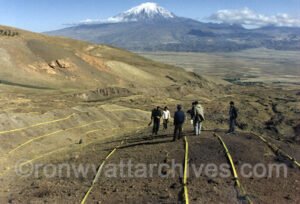
The 2 volcanic Ararat mountains arose in this plain and can be seen from the site of the ark as arising abruptly from the green, fertile valley. This area possesses a “special fertility” (People of the Hills, p. 35) which is indicative of the special provisions God made for the first family in reestablishing life on the planet. In 1989, Ron photographed a roadside vegetable stand in the area near the ark where a local farmer was selling his cabbages- the largest we have ever seen anywhere!
Plant Foods from Seeds Brought on the Ark
Before Noah and his family entered the ark and after he was told by God to take 2 of every unclean animal and 7 pairs of every clean animal, he was further instructed:
GEN 6:21 And take thou unto thee of all food that is eaten, and thou shalt gather it to thee; and it shall be for food for thee, and for them.
This indicates that all of the food for both the people and the animals was plant-life; food products that could be gathered and would last throughout the entire time they were in the ark. And from this food they would have had seeds even if they didn’t bring seeds with them (which I suspect they did).
When they left the ark, they began to sow the seeds that would produce food. And the archaeological excavations reveal evidence which fit this scenario perfectly. I couldn’t help but chuckle when I read the following concerning the evidences found in eastern and central Turkey:
“Paleo-botany had provided evidence illuminating the earliest stages of the cultivation of emmer and einkorn wheat and two-row barley, with subsequent mutations resulting in improved strains; but still the problem of the ultimate geographical sources of the wild grains found in the earliest excavated settlements awaits solution,...” (People of the Hills, p. 4).
“Even more important than the different varieties of timber available for building were the species of edible plants. Of these of course the most important are the cereals, but also the most problematic because of the unsolved questions of the origins.” (People of the Hills, p. 10).
It was in Anatolia (Turkey) that many plants were “reborn”- planted there by Noah and his family from seeds brought there from before the flood and from there, carried to the various parts of the world:
“Anatolia is situated at the meeting of three principle zones of distribution of plants: these are the so-called Euro-Siberian zone (Europe, Russian and Siberia), the Irano-Turanian zone (the steppes of central Asia, Iran and central Anatolia) and the Mediterranean zone.... Recent work has shown a large percentage of plants which are endemic, that is, confined to Turkey: this is particularly true of the Taurus ranges, where the Irano-Turanian and the Mediterranean botanical zones meet.” (PH pp. 9, 10).
This last quote is especially exciting for it tells us that in the general region of south central Turkey, there is a large number of plants that are found ONLY there. What does that mean? It indicates that some of the original plants Noah brought from the pre-flood world never made it past the region of Babel. When the time came that the groups left the area, it looks like they only took with them the major grains and staple plant foods leaving behind a variety of plants whose beginnings were in the pre-flood world.
Noah Planted Fruits Which Today STILL Grow in the Cold Climate
Not only did Noah and his family have grain foods, they had fruits, which is rather amazing considering the climate of the northeastern part of Turkey. To this day, Turkey has fruits which thrive in spite of it’s cold climate:
“...apples, plums, apricots, peaches and mulberries are common in the eastern highlands, including the districts round Lake Van, where they are hardy enough to survive the severe winters” (PH, p. 10).
Remember Noah’s vineyard?:
GEN 9:20 And Noah began to be an husbandman, and he planted a vineyard:.
Yet, vineyards are usually found in warm climates, certainly not in regions with such dreadfully cold winters as eastern Turkey. But,:
“The vine is a hardy plant at home in much of Anatolia, Trans-Caucasia and the Urmia basin, the grape-bearing type being vitis vinifera,...” (PH, p. 11).
To sum up the evidences, the earliest found specimens and forms of many, many food plants are found in the ancient settlements extending outward from the area of the ark and Ron’s site for Babel in south central Turkey. Turkey even has some plants today which are found nowhere else on earth. How can these things be explained? There is no explanation except for the Genesis account.
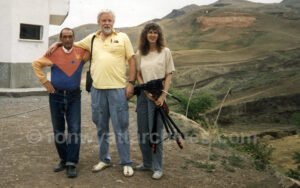
Welcome to the Ron Wyatt Archives. I'm Mary Nell (Ron's wife) and this site will attempt to fully document Ron Wyatt's work and discoveries. This website will be an ongoing project to document his work on all his various discoveries. Please check back often as new things will be added constantly.
| READ MORE |

